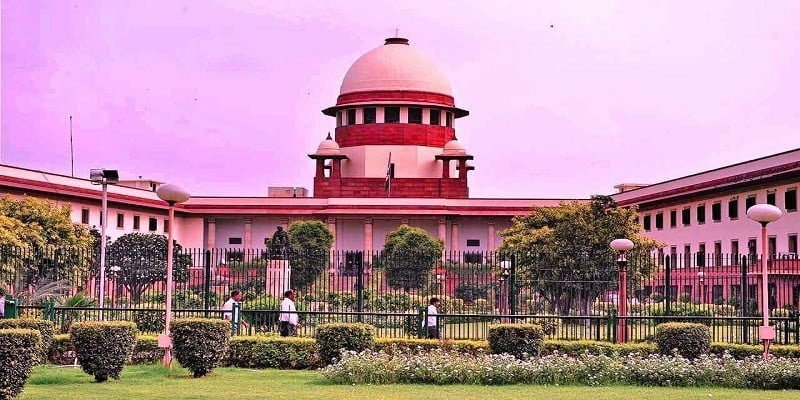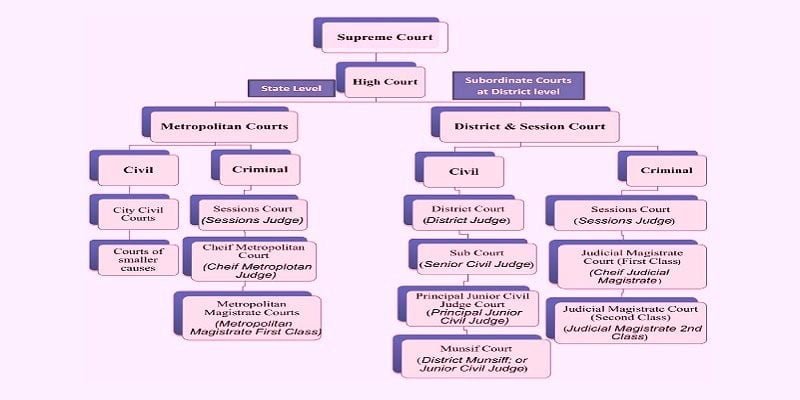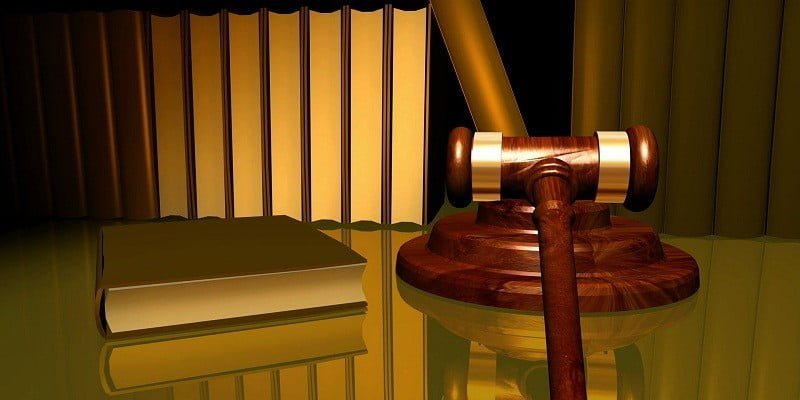Indian Judiciary System: Guardian of Human Rights and Promoter of Peace:
Judiciary is one of the important pillars of democracy. The other two are legislature and executive. Their functions are making of laws and execution of laws respectively. Judiciary is the backbone of a country. Judiciary is the guardian of the human rights, protector of the constitution and promoter of peace and cordiality in India. It checks and balances the legislative or executive actions of the Government. As Alexander Solzhenitsyn rightly said, “Justice is conscience, not a personal conscience but the conscience of the whole humanity.” Indian judiciary system is one of the oldest judiciary systems in the world.
Centuries of Judicial Legacy:
The judiciary system in India traces back to centuries. India has recorded judiciary history since the Vedic Ages. The ancient India had legal system prevalent even before Bronze Age and Indus valley civilization as it believes. The concept of law or Dharma was inherited from the Vedas, which was basis of the Hindu law. Secular law in India varied from region to region and ruler to ruler. Many ruling dynasties in India had court system as an essential feature of their administration. Excellent court systems existed in Maurya Dynasty and Mughal Dynasty which preceded modern court system.
History Of Indian Judiciary System:
The British Legacy:
The British rule in India is responsible for establishment of common law system in India. The establishment of British common law-based system can be traced to the 17th century when British East India Company arrived and started expanding. In the early 17th century, the British crown, through a series of charters, established a judicial system in Bombay (present day Mumbai), Madras (present day Chennai) and Calcutta (present day Kolkata). This was for the purpose of administering justice within the establishments by British East India Company.
The Evolution of Mayor Courts:
The Courts in Bombay and Madras were called Admiralty Courts, whereas the court in Calcutta was called Collector’s Court. These courts did not derive their authority from the crown, but from the British East India Company. The Charter issued by King George I on 24 September 1726 marks an important development in Indian judiciary system. With the growing expansion of its establishments, British East India Company faced new challenges. So, the company requested the crown to issue a charter granting special power to it. In 1726, King George I granted charter to establish Mayor courts in Bombay, Madras and Calcutta. Mayor courts were courts of the King of England.

Different Acts That Supported Indian Judiciary System To Get Established:
From Supreme Court to High Courts:
The Regulating Act, 1773 was the first attempt at creating a separate independent judiciary for India. On 26 March 1774, Letters Patent was issued to establish the Supreme Court of Judicature. The Supreme Court, under the Regulating Act of 1773 was a court of record and had the power and authority similar to that of the King’s Bench in England. Following the first war of independence in 1857, the control of territories of British East India Company was taken over by the British crown. In 1861 the Indian High Courts Act and the Indian Councils Act were passed by the British Parliament, which empowered establishing High Courts in three Presidency towns.
Federal Court of India:
The former provided for the abolition of the Supreme Courts of Judicature and the Sadar Diwani Adalats and the constitution of the High Courts. The Chartered High Courts remained as the highest courts in India till the establishment of the Federal Court of India under the Government of India Act of 1935. The Government of India Act, 1935 changed the structure of Indian Government from unitary to federal. This demanded the creation of a federal court which would have jurisdiction over the high courts and the states as well as provinces. Section 200 of the Government of India Act, 1935 created the Federal Court at New Delhi.
Post-Independence Scenario:
Evolution of the Supreme Court of India: From Federal Court to a Growing Judiciary:
After we got our independence in 1947, the Constitution of India came into effect on 26th January 1950. The federal court was converted to the Supreme Court of India (SCI) and came into effect on 28th January 1950. The original Constitution of 1950 envisaged a Supreme Court with a Chief Justice and 7 puisne Judges – leaving it to Parliament to increase this number. As the work of the Court increased and arrears of cases began to cumulate, Parliament increased the number of Judges from 8 in 1950 to 11 in 1956, 14 in 1960, 18 in 1978, 26 in 1986 and 31 in 2008 (current strength).
Indian Judiciary: A Strong Integrated System with Supreme Court at the Apex:
Indian constitution has established an integrated judicial system with the Supreme Court at the top and high courts below it. Under a high court there is a hierarchy of subordinate courts, i.e. district court and other lower courts. The Supreme Court of India was inaugurated on 28th January, 1950. It succeeded the federal court of India, established under the Government of India Act, 1935. Article 124 is related to the establishment and constitution of the Supreme Court.
How Does The Indian Judiciary System Function?
Supreme Court of India:
At present, the Supreme Court consists of thirty-one judges (one chief justice and thirty other judges). The chief justice is appointed by the president after consultation with such judges of the Supreme Court and high courts as deems necessary. The other judges are appointed by the president after consultation with the chief justice and such other judges of the Supreme Court and high courts as deems necessary. A judge of the Supreme Court can be removed from his office by an order of the President. The high court is the top court in the judicial administration of a state. The judiciary in a state consists of a high court and a hierarchy of subordinate courts. Article 214 of the Indian Constitution deals with establishment of High Court of a state.
India’s High Courts:
At present there are twenty-five high courts in India out of which four are common high courts. New Delhi is the only union territory to have its own high court. Every high court (whether exclusive or common) consists of a chief justice and other such judges as the president may time to time deem necessary to appoint. The Chief Justice is appointed by the President after consultation with the Chief Justice of India and the concerned state’s Governor. The Chief Justice also plays a key role in the appointment of other High Court judges. In the case of a common High Court for multiple states, the President consults with the respective Governors. High Court judges can be removed by the President’s order, ensuring accountability. This process upholds the integrity of India’s judicial system.

Grassroots Level Functionality Of Judiciary System:
Subordinate Courts: Function, Structure, and Jurisdiction in India’s Judicial System:
The subordinate courts function below and under the high court at district and lower levels. Article 233 to 237 deal with the organization and function of subordinate courts. The district judge is the highest judicial authority in the district. The state government is appointing, posting and promoting of district judges in consultation with the high court. The organizational structure, jurisdiction and nomenclature of the subordinate judiciary are laid down by the states. Hence, they differ from state to state.
Lok Adalat: Empowering Alternative Dispute Resolution for Speedy Justice:
Resolve Cases Efficiently: Lok Adalat for Matrimonial, Land, Labor, and Family Disputes Lok Adalat serves as a platform where ongoing court cases or pre-litigation disputes find resolution through compromise or settlement. This alternative dispute resolution forum handles various matters including matrimonial/family disputes, land acquisition cases, labor disputes, workmen’s compensation cases, pension cases, housing board and slum clearance cases, consumer grievances, electricity issues, and telephone bills. Additionally, the enactment of the Family Courts Act in 1984 led to the establishment of Family courts, aiming to expedite the settlement of disputes concerning marriage and family affairs. Experience efficient dispute resolution with Lok Adalat and Family courts.
Some Suggestions For Our Indian Judiciary:
Despite of having a strong and independent judiciary system in our country, the third pillar of democracy is not free from controversies. The political influence on the judiciary is never out of question. The delayed justice has always raised eyebrows. The flaws in the judiciary system fail to deliver justice in time. As they say, justice delayed is justice denied. Because of these citizens are losing faiths over the judiciary. The question still remains, is the third pillar of the democracy is really independent? Is it really effective in delivering justice?
**********
Disclaimer:- Views expressed are the author’s own.




Wonderful peice of article
Thanks for your appreciation.